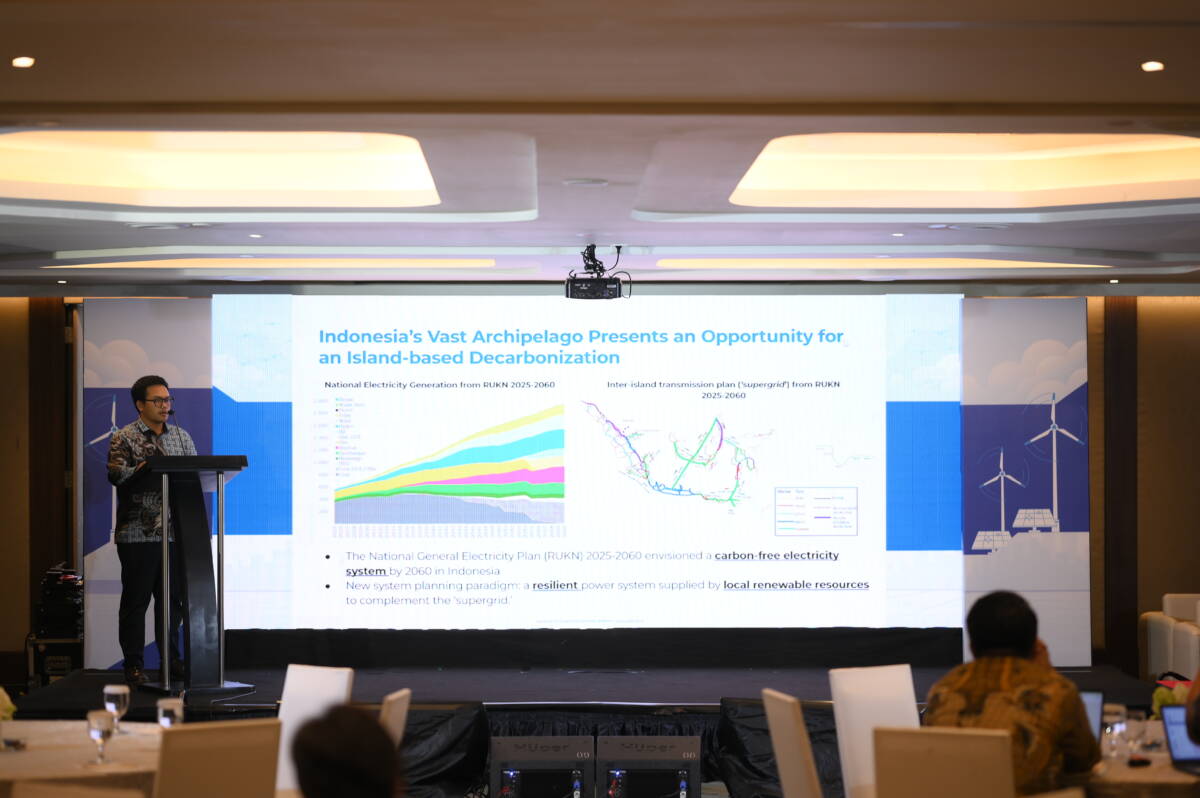Jakarta, June 30, 2025 – PLN’s 2025-2034 Electricity Supply Business Plan (RUPTL) has set a target of adding 42.6 GW of renewable energy capacity and 10.3 energy storage systems. Along with the increase in renewable energy capacity, it is necessary to develop a transmission network that is able to accommodate and operate the energy system flexibly.
The Institute for Essential Services Reform (IESR) has completed the report Flexibility in the Development of the Electricity System Case Study of Sulawesi Island. This report specifically looks at and analyzes the situation of the electricity system in Sulawesi. Sulawesi Island was chosen considering the future projection, there will be massive industrial development on this island to pursue the economic growth target.
Abraham Octama Halim, IESR Electricity System Analyst stated that with the high renewable energy target in the RUPTL, it is important to look at the current electricity network capacity to accommodate the integration of renewable energy variables.
“Energy generation will shift from being based on fossil fuels to more renewable energy. Based on IESR modeling of the renewable energy target in the National Electricity General Plan (RUKN), variable renewable energy will increase significantly from 2.4 percent in 2024 to around 29 percent in 2060,” said Abraham.
This increase in the variable renewable energy mix requires a system balancer in the form of an energy storage system such as a battery, or a power plant that is operated flexibly. Renewable energy technologies that take this flexibility vary according to time scale, thus requiring integration of energy system planning.
Along with the report above, a study of the Long-Term Electricity Sector Development Plan to Achieve 100% Renewable Electricity on Timor Island and Sumbawa Island was also launched, which shows that Sumbawa Island and Timor Island can meet their energy needs from renewable energy sources.
IESR Executive Director, Fabby Tumiwa, stated that Indonesia’s geographical conditions, which were initially a challenge to developing energy infrastructure, are now a great potential for developing renewable energy.
“Developing an island-based energy system is a geographical and economic necessity. In Sulawesi, the flexibility of the electricity system is key to integrating variable renewable energy sources. Sumbawa Island shows that 100% electrification of renewable energy can provide a secure and affordable energy supply while eliminating carbon emissions. Meanwhile, on Timor Island, the development of solar, wind and biomass energy can replace existing fossil power plants and those planned in the latest RUPTL, by providing competitive electricity prices compared to systems that use fossil energy,” said Fabby.
Alvin Putra Sisdwinugraha, Electricity and Renewable Energy System Analyst, IESR stated that based on IESR’s technical analysis, the use of renewable energy entirely on Sumbawa Island and Timor Island is very possible.
“Based on the results of modeling several scenarios, it can be seen that choosing an energy system that accommodates renewable energy can reduce energy generation costs, while reducing emissions,” said Alvin.
Alvin emphasized the importance of political commitment from the government as the main driver of accelerating the energy transition. The two islands selected as case studies have a progressive commitment to developing an energy system based on renewable energy.
Farah Heliantina, Assistant Deputy for Acceleration of Energy Transition, Coordinating Ministry for Economic Affairs, explained that to support the acceleration of the energy transition in Indonesia, her party has designed a policy that facilitates private sector participation in building renewable energy power plants to ensure smooth investment flows.
“Currently, we have just ratified Government Regulation (PP) Number 28 of 2025 which replaces PP No. 5/2021. In this new regulation, the licensing process is made more concise and becomes a strong legal basis for investors. That way, the contribution (investment) to the APBD and APBN will increase,” said Farah.
Isaac Portugal, Renewable Integration Security Unit, IEA, explained that the challenges that arise from the shift in the energy system to be based on renewable energy are technical challenges concerning the resilience and flexibility of the network to accommodate variable renewable energy. Energy storage systems such as batteries or pumped hydro energy storage (PHES) are needed as a balance.
“What must be considered is that balancing technology, whether it is batteries, PHES, or flexible operating systems, is capital intensive. Therefore, proper planning and design of incentive systems are needed for the installation of this balancing technology,” Isaac explained.

